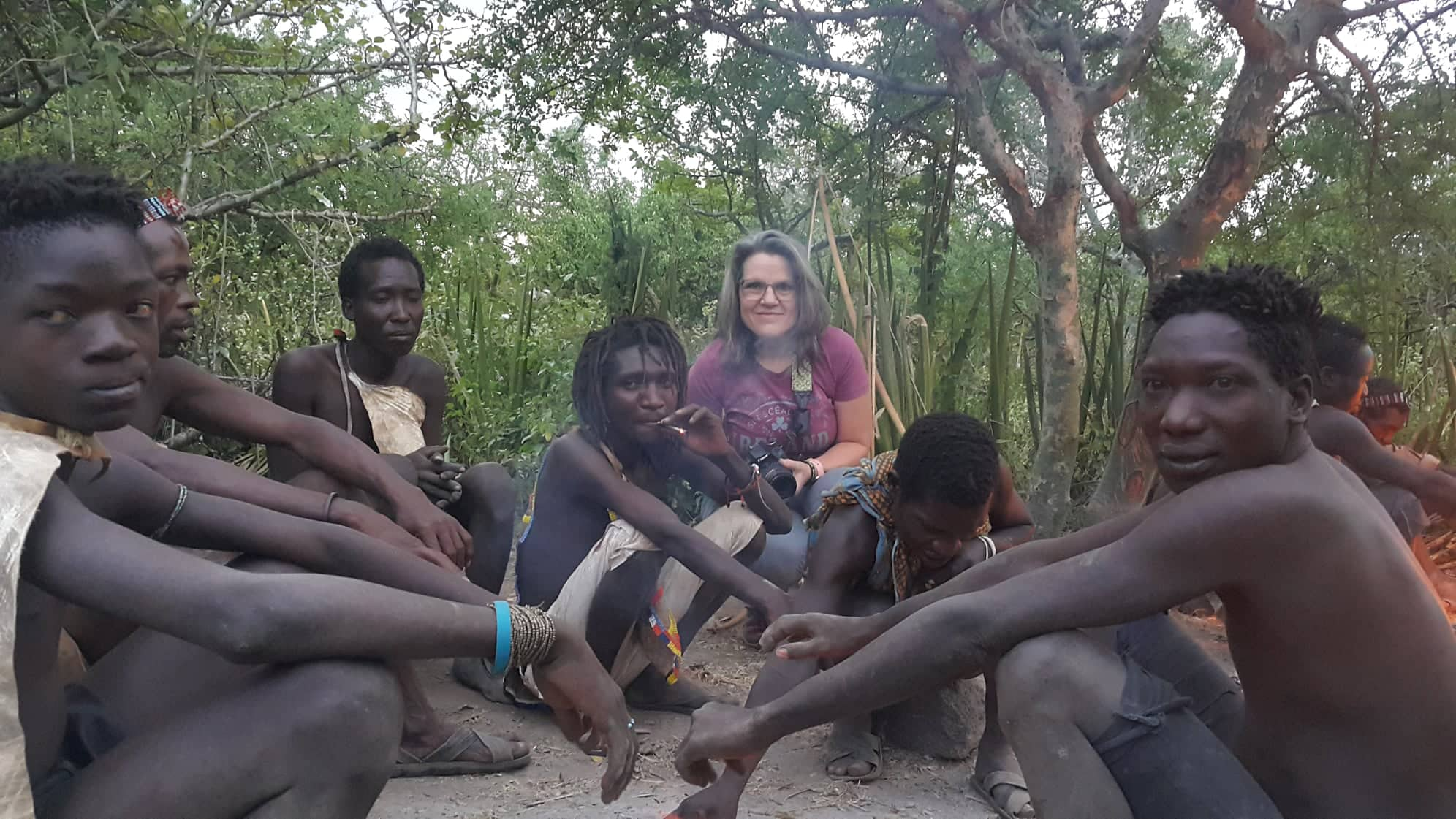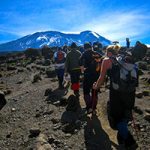Meeting the Hadzabe Tribe……
Trekking with KCC is not just about Kilimanjaro. Many of our trekkers go on to do a Safari with us – visiting all the best National Parks that Tanzania has to offer. Ranging from 1 Day to 5+ Days, we explore the Serengeti, Ngorongoro Crater, Lake Manyara and Tarangire National Parks to name a few. Apart form the excitement and draw of searching for the Big 5 – one part of an amazing safari can very often be missed – a meeting with one of Tanzania’s oldest tribes – The Hadzabe.
The Hadzabe are an indigenous tribe in Tanzania that reside around Lake Eyasi. Only approximately a thousand of them still exist today, making them one of the last hunter-gatherers in the world. Around 300–400 tribe members still lead a truly nomadic existence in the Tanzanian region around Lake Eyasi. They communicate using the distinctive click language known as Hadzane, which also include popping sounds and is almost impossible for Westerners to emulate.
The Hadzabe have been losing their territory by around 90% during the last century. Their habitat and hunting grounds are being devastated by farmers, pastoralists, and land developers. Less bees are producing honey, fewer animals are available for hunting, and fewer berries and fruits are available for gathering. Unless the Hadzabe receive essential help and support, we may witness the disappearance of this unique nomadic tribe.
Meeting them at one of their camps and gaining an insight into their daily lives may be both educational and enjoyable. The tribe members are eager to show you their world and go on a hunt with you. They are also highly sociable and kind. They have a lot to teach us, and we can learn a lot from them by spending time with them:
1. They only rely on the land and natural world to survive.
The Hadzabe have been coexisting with nature for countless years and consider themselves to be stewards of the land. They hunt animals to survive and use plants for food and medicine. They have no carbon imprint, and their impact on the environment is essentially unnoticeable. In order to locate honey, the Hadzabe will occasionally whistle back and forth with the honeyguide bird until the bird directs them to a beehive. The Hadzabe smoke out the bees and collect the honey before giving the honeycomb to the bird.
The 2019 Equator Prize was awarded to the Hadzabe of the Yaeda Valley. The UNDP Equator Initiative gives the award to indigenous organizations in recognition of their creative work in advancing sustainable development and finding natural solutions to climate change. The Yaeda Valley Project, a forest conservation program started by the Hadzabe, has received praise for being a creative, nature-based response to climate change that promotes biodiversity and sustainable rural development.
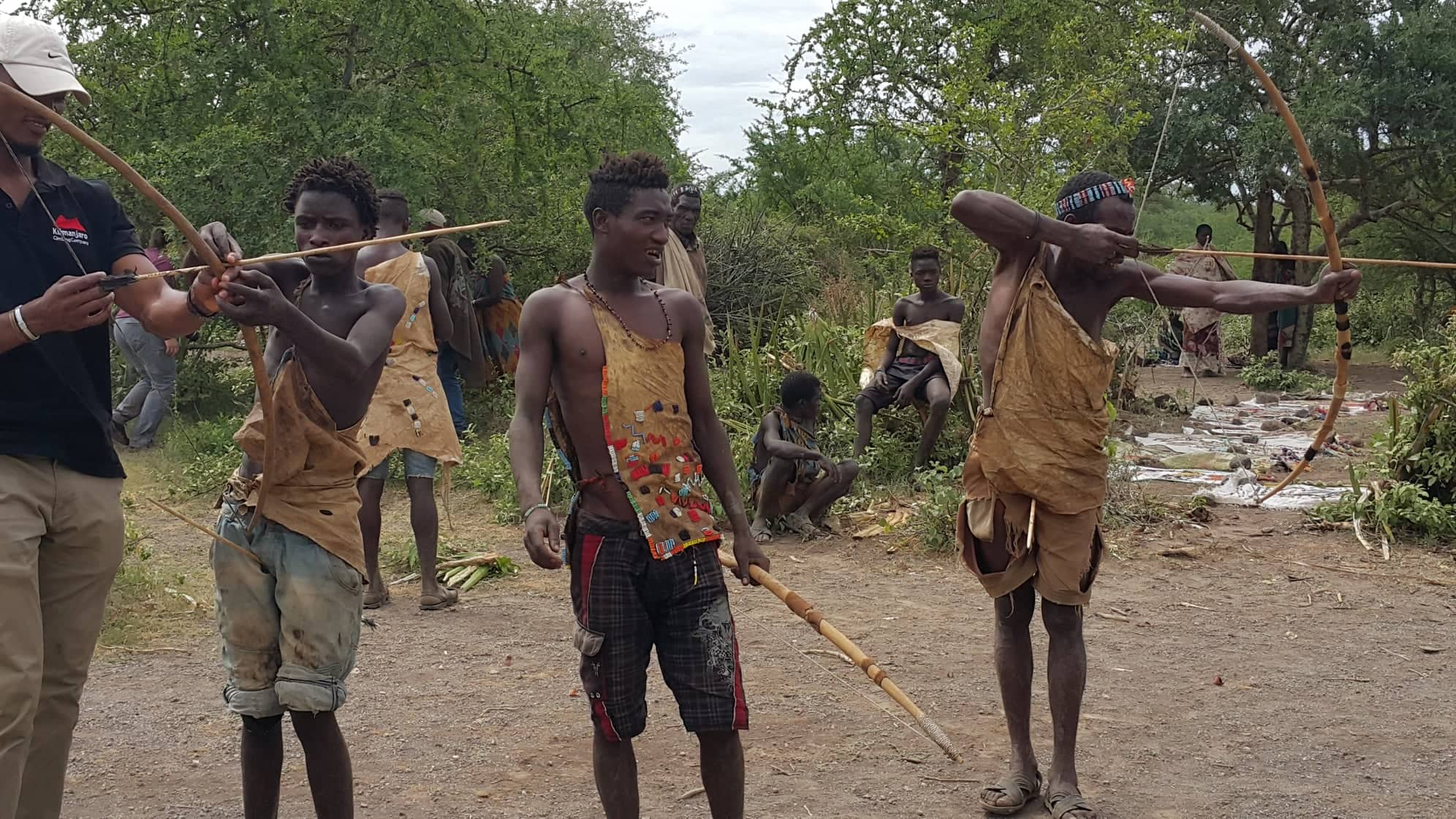

2. They live a free life and live in the moment.
The Hadzabe lead liberated lives mostly free of social obligations, void of religious prohibitions and without many obligations to the family. Free of commitments to timetables, jobs, superiors, bills, traffic, taxes, laws, news, and money. Free from anxiety, they have an unusual amount of free time and don’t think about tomorrow, keeping track of time and have no use for calendars.
They have no language for the days of the week or the months of the year; their sense of time is based only on the movements of the animals and the shifting patterns of their blossoming plants. Their ages are calculated based on occurrences or events that occurred around their births, rather than numbers. They don’t worry about what they’ll eat tomorrow; instead, they accept each day as it comes and trust that nature will provide what they need.
3. They live in harmony with one another.
Families, in-laws, and friends live in camps of 20-30 people as a tranquil community. Everyone works together to raise the children; the Hadzabe consider all children born into the tribe to be their own. Men and women work together to create huts for their encampment. There is generally one camp leader who is chosen for his knowledge, bravery, and intellect, but he has no specific power – there is no hierarchy. He must treat everyone fairly, offer affection, and solve difficulties. Individual liberty is a feature of the Hadzabe; no Hadza adult has power over another.
When it comes to major decisions, women typically hold the last word. When a couple divorces, the woman normally gets to select who the children will live with. Several times a year, the various camps get together to share ideas, get to know one another, engage in target practice, sing and dance. Some Hadzabe women have married outside the tribe but returned because they value their simple and harmonious lifestyle, which does not require them to submit to their husbands (as is the case in many other cultures).
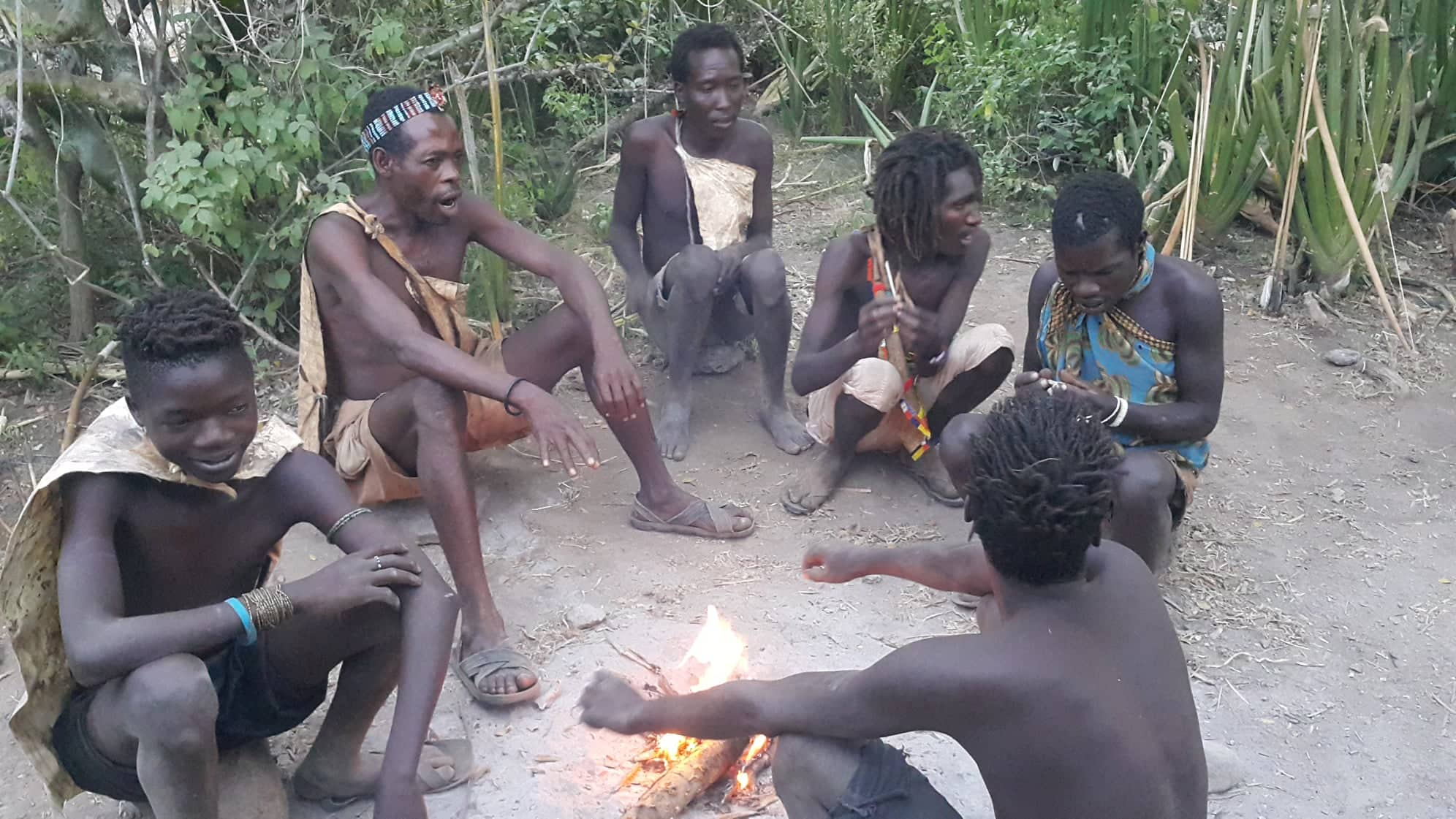

4. They live almost without any belongings and just take what they require.
The Hadzabe have no livestock or permanent dwellings, and they don’t cultivate any food; they rely entirely on the animals and berries/fruits/honey they discover every day. In addition to their bows and arrows, the only objects they may own are a cooking pot, a water container, and an ax. They will not kill another animal until they have finished eating what they have hunted. They don’t store food.
5. They share everything.
When male members of the tribe return from a hunt, they divide their catch with the elders, women, and children. Anyone who has killed an animal does not boast about it; it is seen as a community triumph. The same is true for the fruits and berries that the ladies have foraged for during the day.
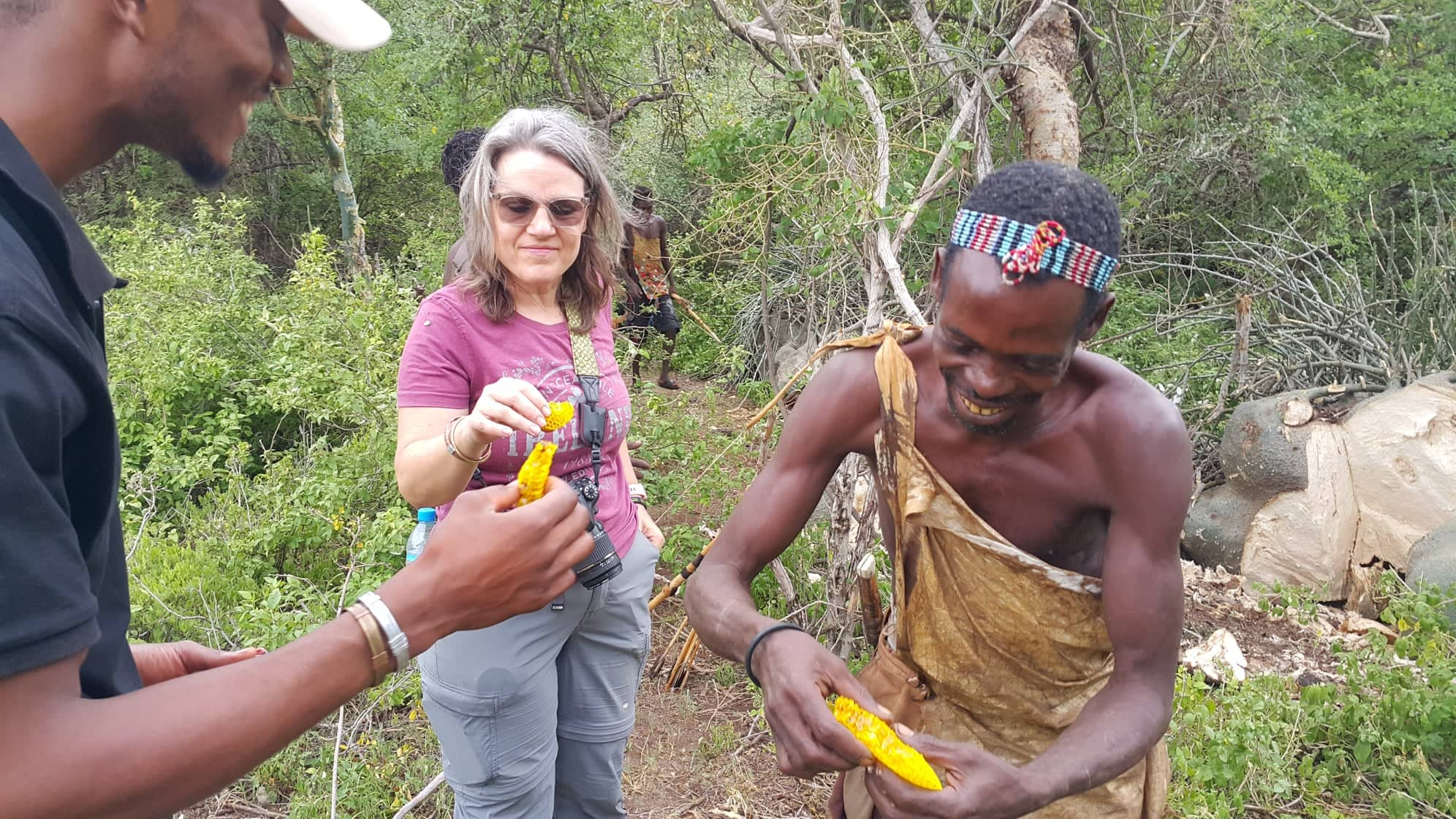

6. They provide us an insight of our ancestors/roots.
According to genetic tests, they may be one of the fundamental roots of the human family tree, dating back more than 100,000 years. Meeting them is like traveling back in time to observe how our forefathers lived over 10,000 years ago, before agriculture emerged. Despite persistent pressure from the outside world, they have managed to preserve their language, values, and way of life.
They are nomadic and live near caves, and elders share secret stories from their ancestors (usually with a moral they should follow). At night they sleep around a fire and keep warm with animal skins. They still make fire with sticks and wood and wear animal skins to remain camouflaged ( although, these day, many Hadza men have started wearing western clothing such as shirts and/or shorts and many women wear colourful Swahili-style dresses).
-
They have never been in a war or been afflicted with a major disease.
They are peaceful people who would rather flee than fight. They’ve never lived in such close quarters that an infectious outbreak would pose a serious threat.
They have no known famine history; rather, there is evidence of people from a farming group coming to live with them during a period of crop failure. Even today, the Hadza diet is more stable and diverse than that of the majority of the world’s citizens.
